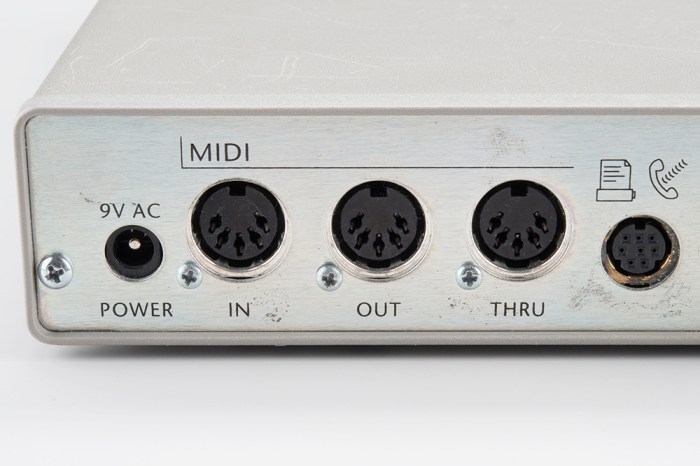Which midi port is optically isolated – In the realm of music technology, the concept of optical isolation in MIDI ports emerges as a crucial factor in ensuring signal integrity, noise reduction, and enhanced performance. This article delves into the intricacies of optically isolated MIDI ports, exploring their advantages, identification methods, applications, troubleshooting techniques, and best practices.
Optical isolation employs optocouplers to create a physical barrier between the electrical circuits of the MIDI port and the external environment. This isolation prevents ground loops, electromagnetic interference, and other noise sources from corrupting the MIDI data, resulting in a cleaner and more reliable signal transmission.
Optical Isolation in MIDI Ports

Optical isolation is a technique used to prevent electrical interference between two circuits by using light as the communication medium. In MIDI ports, optical isolation is achieved by using an optocoupler, which consists of a light-emitting diode (LED) and a photodetector.
When a MIDI signal is present, the LED emits light, which is detected by the photodetector on the other side of the optocoupler. This creates a physical barrier between the two circuits, preventing electrical interference.
Optical isolation offers several benefits in MIDI ports, including:
- Improved signal integrity:Optical isolation prevents electrical noise from entering the MIDI signal path, resulting in cleaner and more accurate data transmission.
- Reduced ground loops:Electrical ground loops can occur when two devices are connected to different electrical outlets. Optical isolation eliminates this problem by breaking the electrical connection between the two devices.
- Increased reliability:Optocouplers are highly reliable components that can withstand harsh conditions, such as extreme temperatures and vibration.
Overall, optical isolation provides significant advantages over traditional electrical MIDI ports, making it an essential feature for applications where signal integrity and reliability are critical.
Identifying Optically Isolated MIDI Ports, Which midi port is optically isolated
Optically isolated MIDI ports can be identified by their physical characteristics:
- Physical isolation:Optically isolated MIDI ports are typically separated from the rest of the device’s circuitry by a physical barrier, such as a plastic or metal enclosure.
- Labeling:Many manufacturers label optically isolated MIDI ports as “optical” or “opto-isolated.” These ports may also have a symbol, such as a circle with a lightning bolt inside, to indicate optical isolation.
The following table compares the features of optically isolated and non-isolated MIDI ports:
| Feature | Optically Isolated | Non-Isolated |
|---|---|---|
| Physical isolation | Yes | No |
| Labeling | Typically labeled “optical” or “opto-isolated” | No specific labeling |
| Signal integrity | Improved | Susceptible to electrical noise |
| Ground loops | Eliminated | Can occur |
| Reliability | Increased | Lower |
Applications of Optically Isolated MIDI Ports
Optically isolated MIDI ports are essential in applications where signal integrity and reliability are critical. These applications include:
- Live sound setups:In live sound setups, optically isolated MIDI ports help to prevent electrical interference from stage lighting, power lines, and other sources of noise.
- Recording studios:In recording studios, optically isolated MIDI ports ensure that MIDI signals are transmitted cleanly and accurately, without introducing any unwanted noise.
- Industrial environments:In industrial environments, optically isolated MIDI ports are used to connect devices in harsh conditions, such as extreme temperatures and vibration.
In these applications, optical isolation provides a reliable and noise-free connection, ensuring that MIDI signals are transmitted accurately and without interruption.
FAQ Compilation: Which Midi Port Is Optically Isolated
What are the advantages of using optically isolated MIDI ports?
Optically isolated MIDI ports offer several advantages, including improved signal integrity, reduced noise susceptibility, ground loop elimination, and enhanced reliability in electrically noisy environments.
How can I identify an optically isolated MIDI port?
Optically isolated MIDI ports typically have physical characteristics such as plastic or fiber optic connectors, or markings indicating “optical” or “isolated.” Consult the manufacturer’s documentation for specific identification methods.
Where are optically isolated MIDI ports commonly used?
Optically isolated MIDI ports are widely used in professional audio applications, such as live sound setups, recording studios, and industrial environments where noise reduction and signal integrity are critical.

